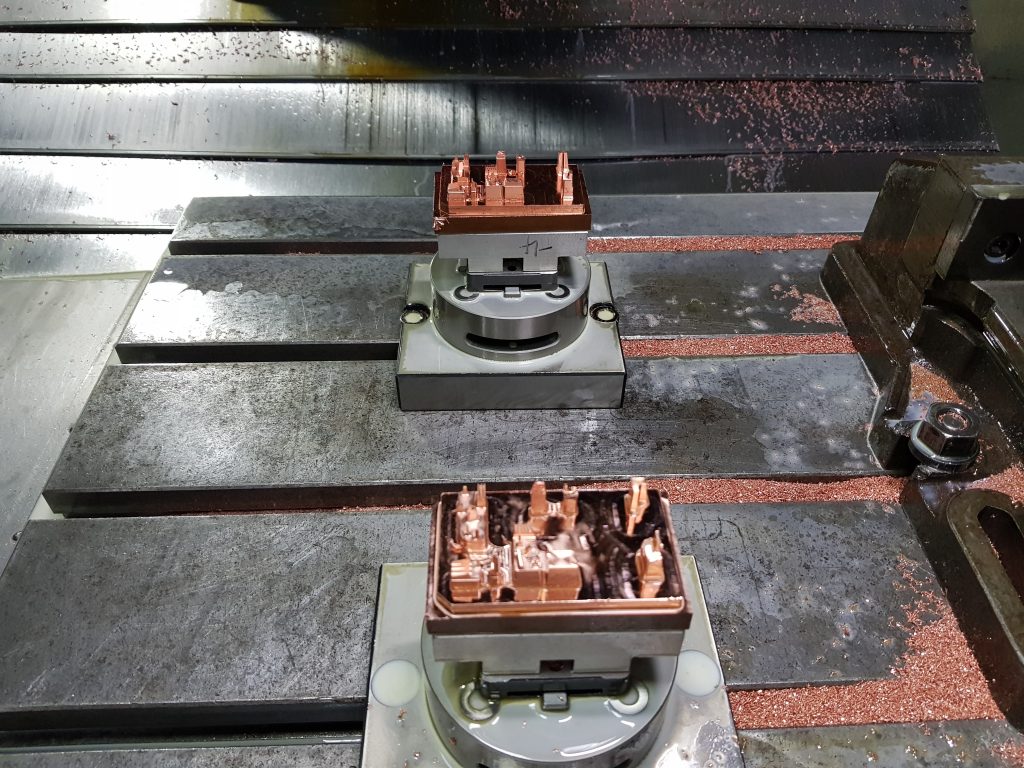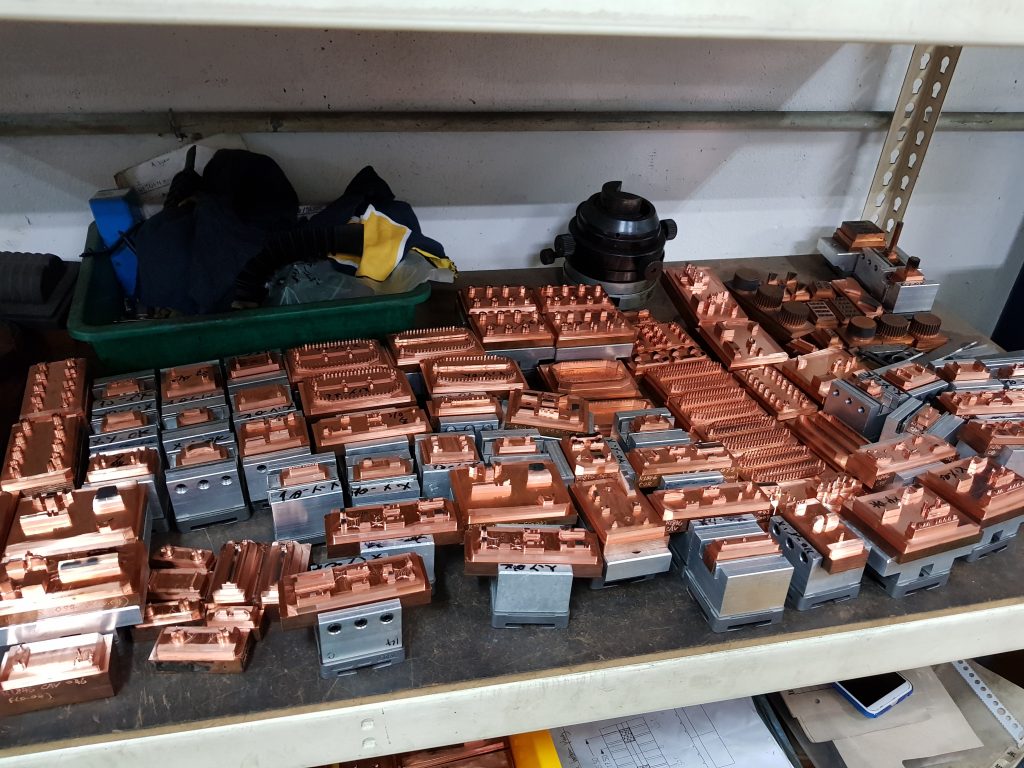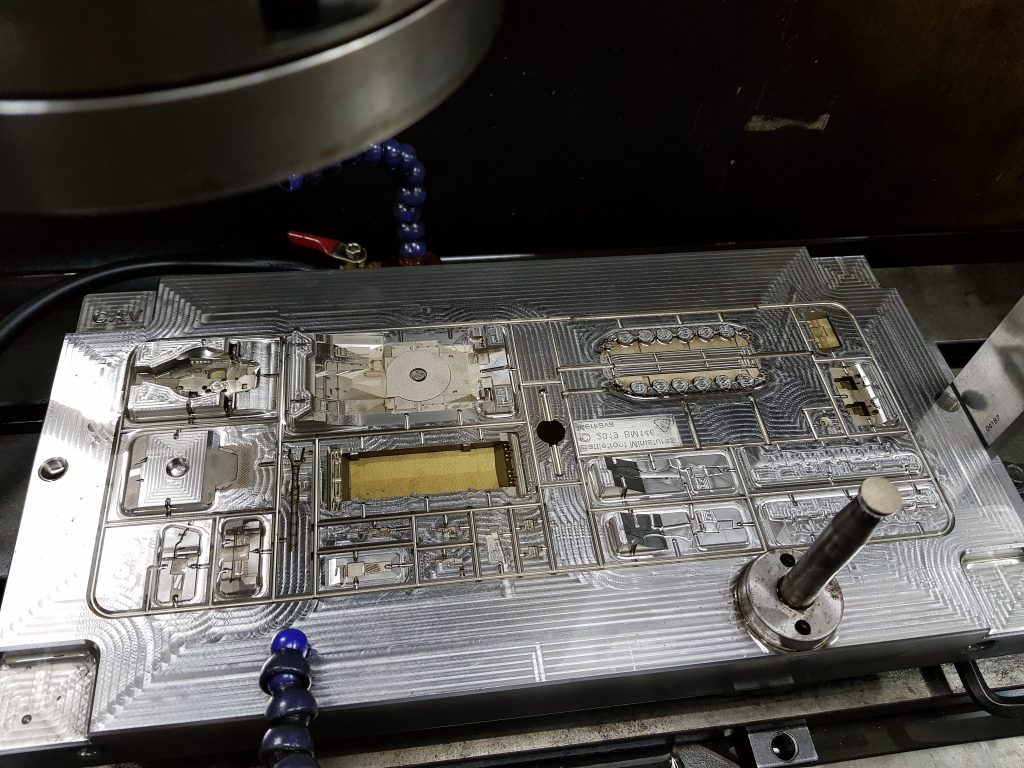with Evan Allen
Oil War is out at last! And I think everybody has been waiting impatiently for this book for a wee while now, I certainly have.
One of the highlights of Oil War for many people I think is the new plastic Merkava tank model for the Israelis, a legendary tank of the 80s and beyond.
We thought you might like to see a little bit of what happens during the creation of a plastic tank for Team Yankee and the following images show some of that process.
These are some of the electrodes being CAD machined in copper, each part is made in copper as a positive item. Copper is soft and easy to machine and is a great electrical conductor which suits the EDM process very well (EDM Wiki page: https://en.wikipedia.org/wiki/Electrical_discharge_machining
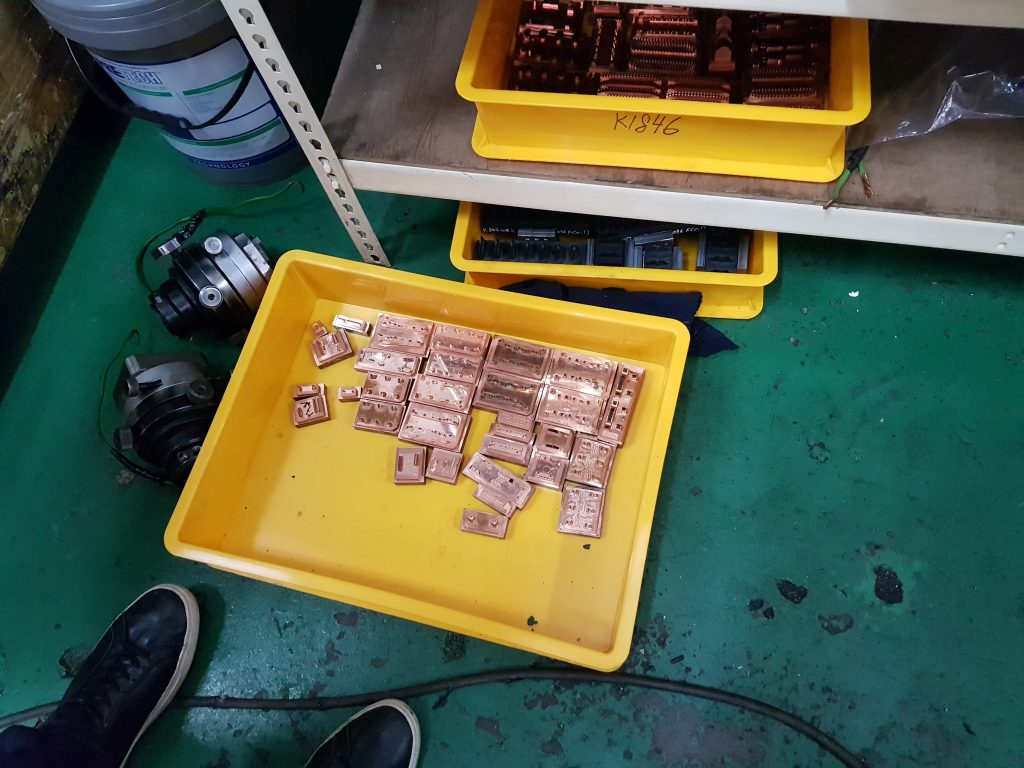
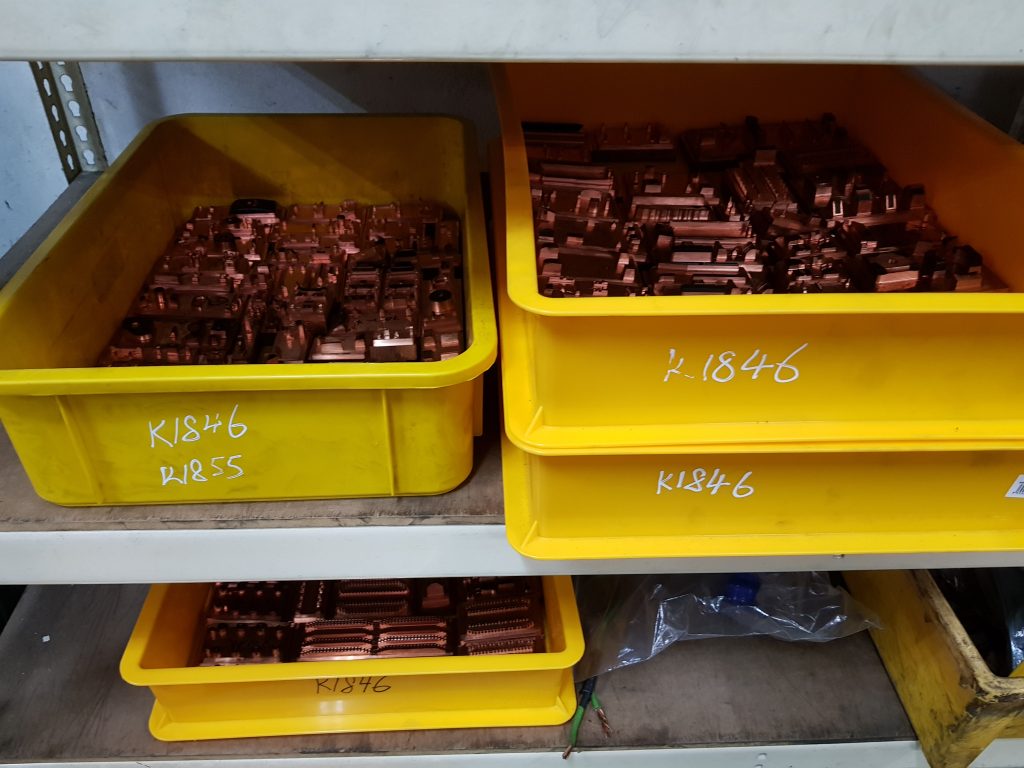
The collection of copper electrodes for all the parts that make up the Merkava tank. These are assembled into a positive copy of the tool about to be created to inject plastic into after the EDM process
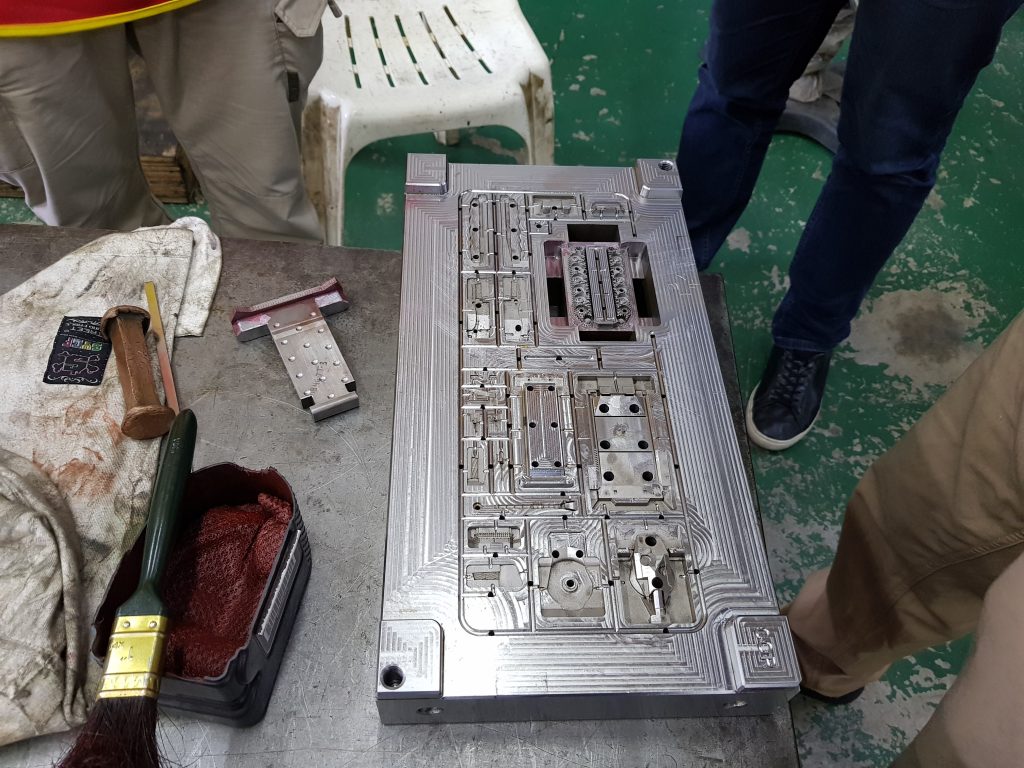
This steel block is called the Cavity side of the tool, it has most of the external detail on it and is set deeper into the steel block so takes longer to spark erode out the detail . Water channels are also added to this side.
Once all the engineering is finished then the tool is set up and several shots of plastic are injected to get test samples of the frame, any fine tuning will be done after these are inspected (yes it’s super exciting to get a hold of the test shots to assemble and know you’re the first to do it 🙂 )

